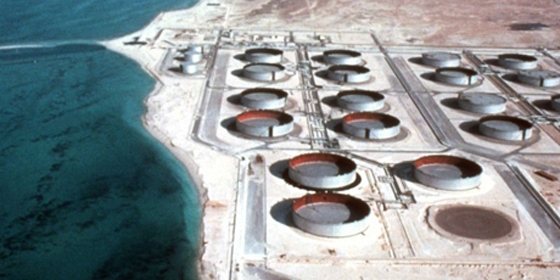Saudi Arabia's LPG (Liquefied Petroleum Gas) exports for 2015 are expected to be steady to slightly lower than last year, as rising demand from domestic petrochemical plants is countered by increasing production from oilfield upgrades, a source familiar with the matter said Wednesday, February 11. Term exports allocated for this year are around 6.6 million metric tons (mt), versus 6.8 million mt for 2014, he said. These were down from a peak of 12 million mt in 2005 to 7.7 million mt/year in 2011 and 2012 and 7 million mt in 2013, industry sources had said.
"There has hardly been any [Saudi] spot cargoes in the market. Demand seen for term volumes are high," he said, adding that priority is given to term customers, though final volumes for this year will depend on crude production level and requirements from local customers.
He said Saudi Aramco has largely maintained its term buyers for 2015, keeping volumes steady for Japanese lifters and increasing them for Indian customers.
"For Indian buyers, Aramco has increased volumes big time," he said, adding that state-run Saudi Aramco has the advantage of offering contracts that are heavy in butane as required by the Indian market.
Trading sources have said overall Middle East LPG term supplies for 2015 have been lowered, with a number of trading firms canceling their contracts or reducing volumes, though overall cuts were limited by increased amounts taken by a major Japanese importer and Indian lifters.
The source said demand for feedstock from the domestic petrochemical sector is estimated at 18 million mt this year.
This is up from 15-16 million mt consumed in 2011, following a 37% jump in 2010 versus the previous year, with the start up of several new petrochemical complexes, industry sources have said.
Saudi Aramco had said it would advance upstream development projects to raise production capacity at the Khurais and Shaybah oilfields, which the source said would also help to boost LPG production.
Shaybah, in the Empty Quarter bordering the United Arab Emirates, is set to have a production capacity of 1 million b/d by the end of 2015, double its original capacity, Aramco had said.
LPG FROM NEW FIELDS
The source said that upgraded fields such as Shaybah — slated to start around the middle or second-half of 2015 and which produces Arab Extra Light crude as well as associated gases — will be good sources of LPG.
"We do not see any drop in LPG production. New fields coming on stream around the middle of this year will give a bit more," the source said.
"LPG from associated gas is reservoir-specific and some are rich in natural gas liquids. It depends on which reservoirs that are rich in Arab Light crude."
But the source said the start-up of three 400,000-b/d refineries in Saudi Arabia — Satorp complex in Q4 2013, Yasref refinery in Q4 2014 and the Jizan facility slated for 2017/2018 — would slightly raise LPG production and would be used for the domestic market.
In the long term, Saudi Aramco's CEO Khalid Al-Falih has said the company had earmarked $3 billion for shale gas exploration, and another $7 billion of investment.
Local media quoted him as saying that Saudi Arabia is the next frontier in the shale revolution, with the kingdom forecast to have up to the fifth largest shale gas reserves in the world.
Al-Falih said the US success had inspired Saudi Arabia to explore its own resources, and technology used by the American shale boom would give Aramco the technical capability to do so.
Trade sources said that as trading firms reduce or halted term contracts for Middle Eastern LPG, they may have raised volumes or sealed new deals for US propane cargoes derived from shale gas.
However, the latest volumes were not immediately known.
The number of cargoes from the US, West and North Africa coming to Asia have been rising over the past year, and in recent months between 12 and 15 cargoes/month were seen coming East, trade and shipping sources said.
The source said cargoes in the US are "very cheap" and Middle Eastern producers will have to continue to engage the market to keep their customers.
Platts.com
11 February






















































